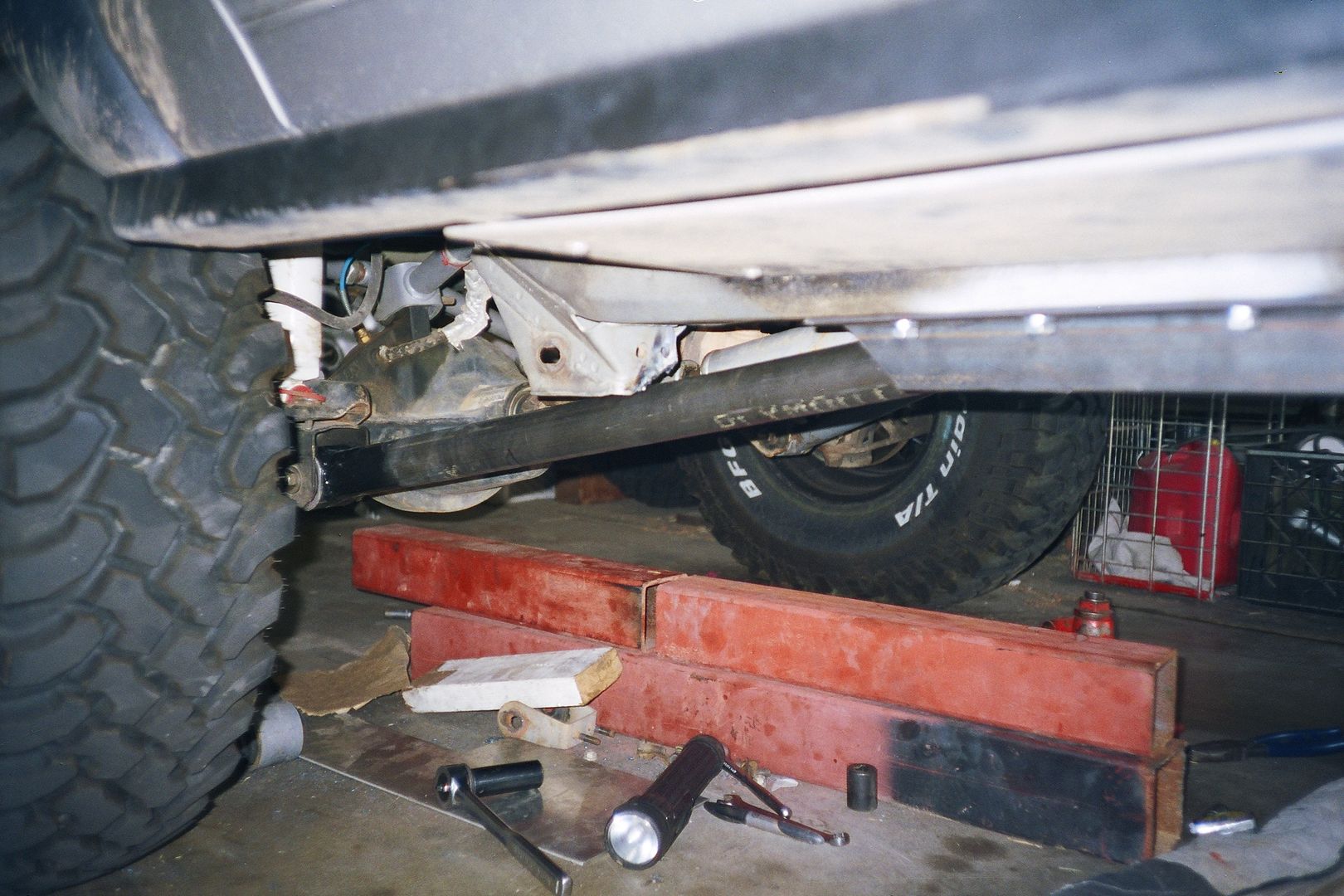denverd1
NAXJA Forum User
- Location
- Dallas, TX
so mid arms are best of both worlds?
Shallow angle gives a better ride but also gives more downtravel.The LCA mounts on the axle are under the coil bucket / shock mount, and the axle can only droop so far before the arms hit the brackets and stop. The more you lift the jeep, the steeper the angle of the arms at rest, and the sooner the travel stops -- in other words, the more you lift, the LESS DOWNTRAVEL YOU GET. Non-curved short arms suffer the most. Curved short arms help. Long arms and drop brackets change the resting angle, giving more downtravel.

I've thought about raising arms on axle end and run them almost level at ride height would take some doing though to do that
The lower arm mount must at least be below the centerline of the axle, or you will completely change the geometry of the suspension and how it works, putting a LOT more stress in places not designed for it, like upper control arms & their mounts.Right now, the axle is between the upper & lower arms mounts on the axle (in a vertical plane). So any rotational force on the axle is handled by the lower mount, and to a smaller degree the uppers because it is between them.If you move the lower mounts up to the axle centerline, the axle will no longer be between them, so any rotational force will pivot on the lower mount and the uppers will have to handle all of the force.You have 24" long 2x4 in your hands.................what works better as a support ??1) put a brick under each end of the 2x4, and then set a 5 lb load somewhere in the middle ? or
2) put a brick under one end and the middle of the 2x4, and then put the 5 lb load at the end with no brick under it ?.
While all that is basically correct, I think your "over-stating" the effects. Look at the arms on one of the best 4x4's ever made.
https://rimmerbros.com/Item--i-LL1490BPCEL40HD?gclid=EAIaIQobChMI_q-33JKe5AIVxiCtBh17ew1_EAkYCiABEgIORfD_BwE

I am somewhat confused, what issues does my Cherokee have with 5.5 inches of lift and control arm drop brackets, that needs fixing ? The control arms are nearly flat, the axle is at least an inch or more forward from stock, the adjustable track bar is mounted in a double shear configuration, and the suspension has a wide range of motion. All this with no welding and zero effing around.
.

Theres so many must by people who must.
Build beefy put the link calculators away and wheel it.
I'm raising links if I break it I'll put more weld on it.
I love running trails along side long armed rigs
Short arms make more room for tools steering gears tires
The short arm haters have me motivated. To build my suspension with flat arms. Need to order some bushings heims.
I'm not sure theres any XJS funning flat arms with any kind of lift
I have been running a radius arm setup for over 20 years. Everybody said it wouldn't work but a million Ford F-150s and Broncos would argue with you. I even "wristed" the passenger side for easier flex. If you do that, you REALLY need limiting straps.
Shallow angle gives a better ride but also gives more downtravel.
The LCA mounts on the axle are under the coil bucket / shock mount, and the axle can only droop so far before the arms hit the brackets and stop. The more you lift the jeep, the steeper the angle of the arms at rest, and the sooner the travel stops -- in other words, the more you lift, the LESS DOWNTRAVEL YOU GET. Non-curved short arms suffer the most. Curved short arms help. Long arms and drop brackets change the resting angle, giving more downtravel.

